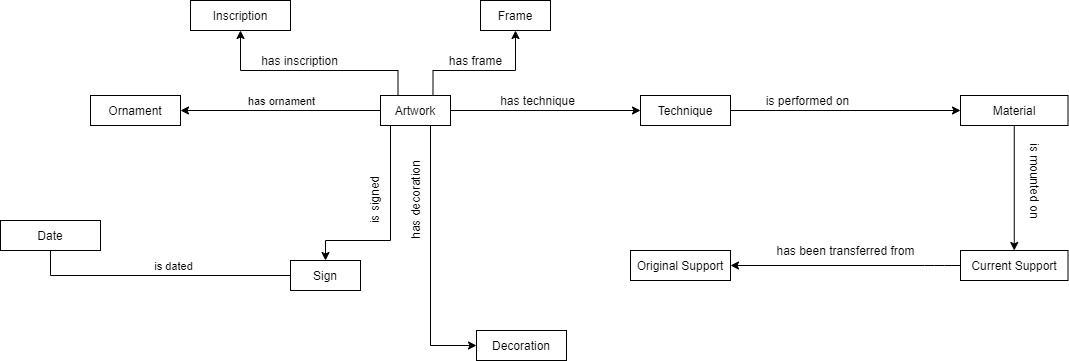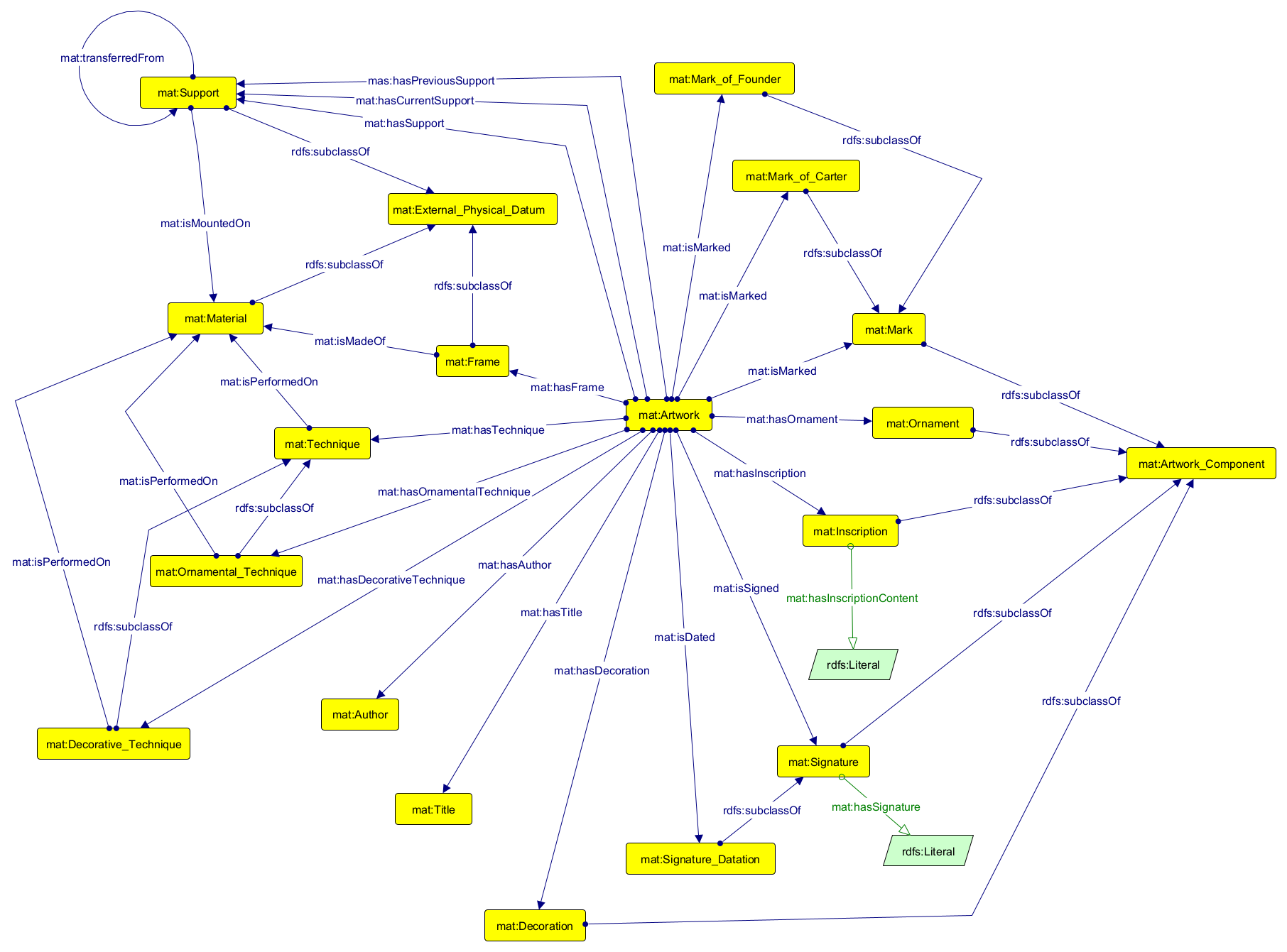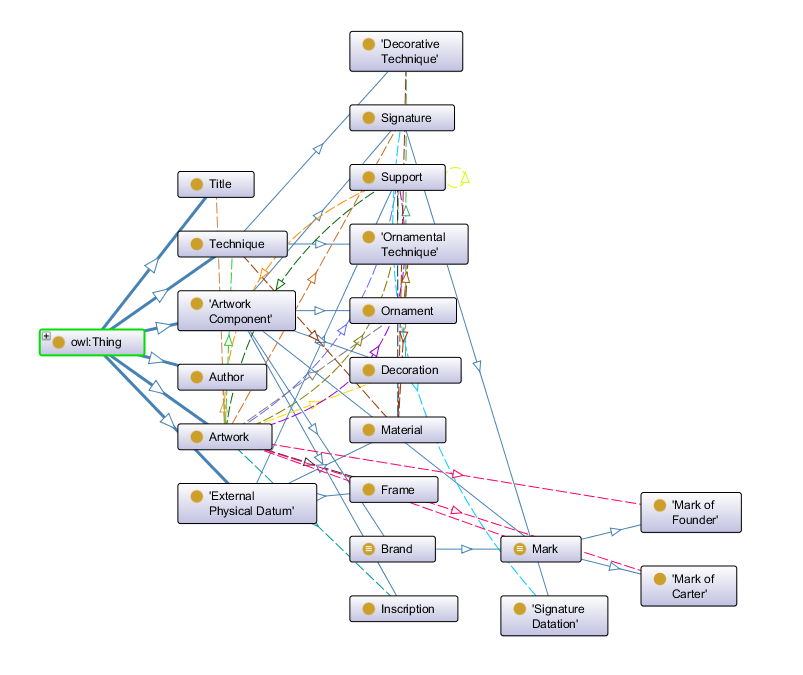Project
Methodology: Ontology requirements specification document (ORSD)
The main functionalities of the ontology have been defined following the guidelines for Ontology Requirements Specification Document (ORSD) proposed in the paper "How to Write and Use the Ontology Requirements Specification Document" by Suárez-Figueroa et al.
The data used since the beginning in order to provide reliable examples and terminologies taken from concrete description of artworks have been extracted from the following catalogue of the MET museums:
- "Italian paintings. Vol. 2, Venetian School" by Federico Zeri;
By following the template proposed by the authors, we have identified the basic requirements to develop this ontology as exposed in the following table.
- Purpose: represent the relationship between materials and techniques in art;
- Scope: the ontology will define artworks at the level of denotative description taking under consideration all the elements that can be related to a material or technique.
- Implementation Language: it is developed through Protégé which supports OWL and RDF.
- Intended End-Users: public or private institutions which need to make available information about artworks in Linked Open Data (LOD).
- Intended Uses: domain experts which wants to search for specific associations of materials and techniques; privates who wants to explore materials and techniques in arts.
- Ontology Requirements:
- Non-Functional Requirements: the ontology must be compliant with international standards.
- Functional Requirements: Competency Questions (CQs) which in the end the user will be able to answer through the queries performed on a SPARQL endpoint.
In this first draft the CQs have been written in natural language, since they are real questions between human beign, not yet formalized to be understandable by a machine. The expected answers are given according to the data contained in the Zeri catalogue (see above)
CQ1
Which technique has been used in the artwork "The Madonna and Child" by the workshop of Giovanni Bellini?
Expected answer: Temper and oil
CQ2
From which material is artwork "The Madonna and Child" by the workshop of Giovanni Bellini made of?
Expected answer: Wood
CQ3
Which are the most common materials on which is performed technique "oil"?
Expected answer:canvas and wood
CQ4
Which are the most common materials in art?
Expected answer: Canvas; wood
CQ5
Which artworks have changed support during their life?
Expected answer: "Three Saints: Roch, Anthony Abbot, and Lucy" by Giovanni Battista Cima.
- Pre-Glossary of Terms
- Terms from Competency Questions: material, technique, artwork.
- Terms from Answers: oil painting, canvas, wood.
Modelling
All the descriptions in the catalogues of the MET Museum have a well defined structure, with a terminology that can be used to make a first draft of the classes and properties of our ontology.First, we started by analysing how materials and techniques were expressed in the text and which were their relationships. In the two examples, it is possible to see visually this formalization and its first transposition from real instances to general classes and properties.
As it can be seen, an important element that immediately comes out is that the material and the support are not the same entity, they can be different, i.e. the material on which the artwork is done can be mounted on a different support.
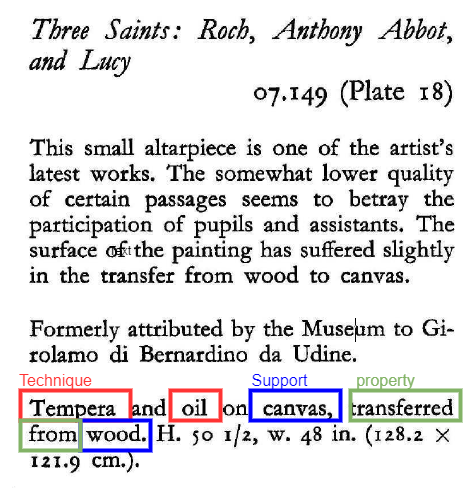
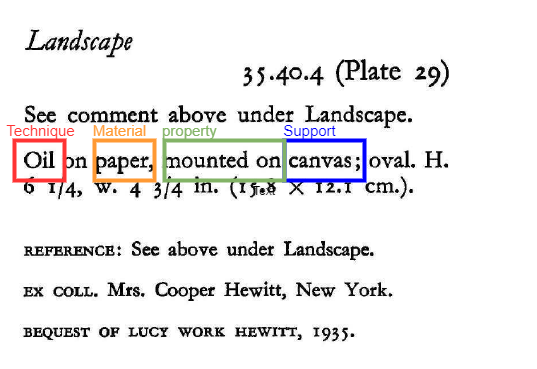
The central realtion from which the ontology has been shaped is the one between technique and material which is defined through the concept that an artwork is realized by means of a technique which is performed on a material.
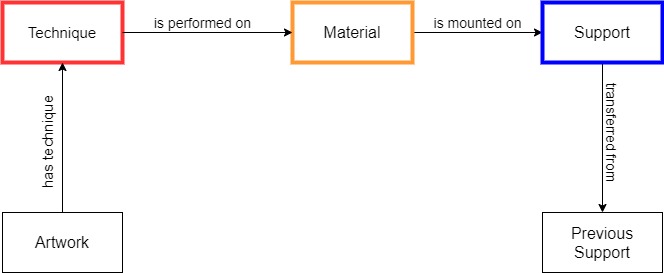
Previous works
Before moving to the proper design of the OM&TA ontology, it must be underlined that various ontologies have already tried to describe artworks in all their aspects, e.g. CIDOC-CRM. In particular, ArCo Ontology has already a module for denotative description which describes materials and techniques performed on the artworks.
The OM&TA ontology does not overlap with the previous two since it is domain-specific and, on the counterpart, needs to be extended through other ontologies as ArCo in order to describe all the other aspects and definitions of the artwork.
As stated till know what changes with the OM&TA ontology is the relation between artwork, technique and material.
In the design of the OM&TA ontology classes will been integrated from the ArCo Ontology if needed equivalences will be pointed out.
